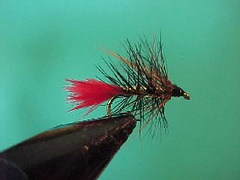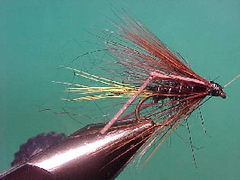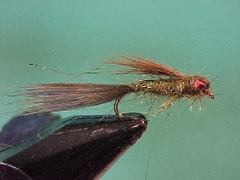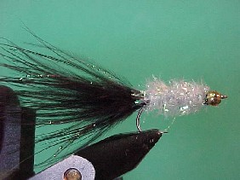Streamers & pulling flies
{{start}}
It’s a subtle distinction between what I consider streamers and pulling flies and what I consider ‘loch style flies’ . The main difference for me is that whilst each of the flies below work well in a team of flies they also fish well by them selves. My favorite woolly bugger flies and some of nymphs such as my damsel nymph and my mudeye are the same. The flies in my ‘Loch’ selection are different. Sure you could fish them on their own but by in large I regard each of my ‘Loch’ flies as fishing best when fished in a team of flies. There are heaps of flies to choose from. These are the ones I carry in my Lake fly box along with my Lock flies.
{{end}}

{{+1}}Doobry variants{{-1}}
{{start}}
Although I have never seen a natural of these colours these fly remain useful dropper flies. I lean toward to two red versions when midge are around and the green version works well in waters when midge are around but stick caddis and sand caddis are also on the menu.{{end}}

{{+1}}Blae & black – Chatto’s soft hackle version{{-1}}
{{start}}
The Mallard & Claret was the first for me in this series. Whilst it has been tweaked at the edges a little this Mallard & Claret pattern remains remarkably similar to the original fly pattern that has its origins in England some 500 odd years ago except for the introduction of a fuzzeled body rather than a hackled body and a soft wing instead of feather slip wings.{{end}}

{{+1}}Dunkeld – hackled as in original{{-1}}
{{start}}
It was the summer of 2000 that I first became involved on English style Loch Style fly fishing and slowly I accumulated an arsenal of techniques and flies. I really enjoy tying flies and so as I have seen various patterns I have tied them and tried them. Most have been discarded and just a few have won a place in my Loch Style fly box - this is one of the keepers. Although I have never seen a natural of these colours this fly is one of my top dropper favorite flies.{{end}}

{{+1}}Leggy wake flies – Chatto’s variant{{-1}}
{{start}}
The beauty of this fly is that once tied with legs if on the day if you decide you want a fly without kegs its easy to snip the legs off. It's also versatile enough, witha little dry fly dressing, to be dry fly. My favourite dressings are blae and black, mallard and claret, green peter and Kate McLaren.{{end}}

{{+1}}Damsel – Chatto’s MK1{{-1}}
{{start}}
There are over 100 different species of Damselflies in Australia and the lava which are usually slender with three terminal gills, that present as tails, form a significant part of a trout's diet. Their bodies have around 10 segments, they have 6 legs and they often have emerging wings. Most appear to be shades of yellow / olive and brown / yellow with some being quite dark and others quite pale.{{end}}

{{+1}}Smelt – Chatto’s version{{-1}}
{{start}}
It tied this fly when last in New Zealand as a merger of a couple of flies to represent their small native fish called a Cockabully. I used it quite successfully fishing the seams in in fast rivers on a fast sink line and decided it add it to my fly box for future use. I am confident that with less weight it will also be a great lake fly and I expect that it can also be used as an imitation to other small bait fish either in the colour below or other hues.{{end}}

{{+1}}Kalkite special{{-1}}
{{start}}
This fly has stood the test of time and has been on this web site since 2005. Over the last 10 or so years it has been my 'go to' fly when fishing to sighted fish or prospecting the shores of Lake Jindabyne particularly around our home village of Kalkite.{{end}}

{{+1}}Floating yabby / crayfish{{-1}}
{{start}}
A floating yabby is a bit of an oxymoron but it does work. Fish it on a fast sink line and let the line sink to the required depth. When you pull the line the floating yabby will be pulled down. When you pause the yabby will rise. Bass love it.{{end}}

{{+1}}Flash Harry{{-1}}
{{start}}
In larger sizes it works well for Bass, EP's, Silver Perch and Yellow Bellies and in smaller sizes its a great for trout. I like to fish it on a fast sinking line either ripped or with a stop and start jerky retrieve or roly-poly.{{end}}

{{+1}}Straggle shrimp{{-1}}
{{start}}
I always fish it on a fast sink line with a leader of around 8 or 9 feet. The best retrieve is similar to spinning soft plastics i.e. jerky movements with plenty of pauses to let the fly to settle back on the bottom. Used in this way it's a good representation of a shrimp or prawn fleeing from its sandy or weedy retreat after being disturbed.{{end}}













